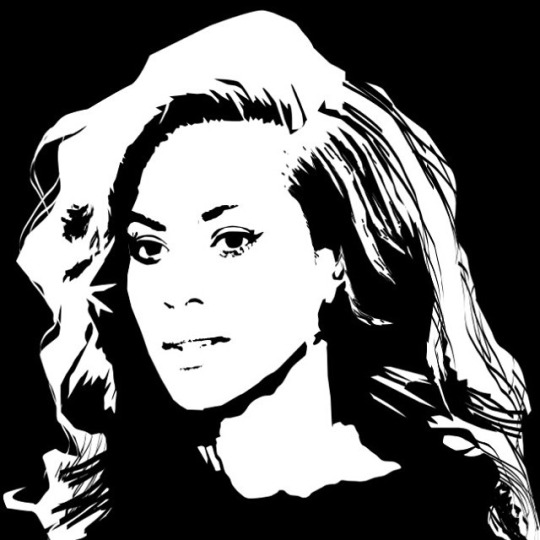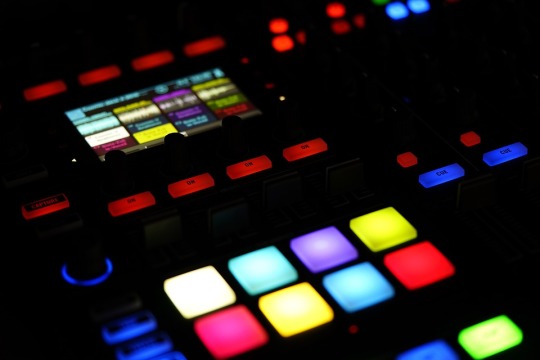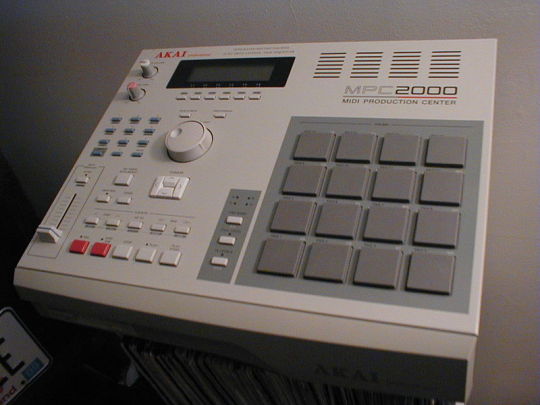#poetry in mocean
Explore tagged Tumblr posts
Text
Otter poetry
Bringing awareness to these
Mighty mustelids











Enjoy these haikus written by our staff in honor of southern sea otters and their importance to coastal ecosystems. If you’re feeling otterly inspired, feel free to share yours below!
#monterey bay aquarium#sea otter awareness week#poetry in mocean#otterly pawesome poetry#which one is your favorite?
1K notes
·
View notes
Text
Yoga and Meditation Classes in Sydney
Yoga meditation is an ancient practice that has been known to enhance well-being and provide peace of mind. It is a holistic approach to health and can help you improve your mental clarity, physical balance, and emotional stability.
For beginners, it’s a great way to relax and feel at ease. You can find many different types of meditations to choose from.
Meditation
Meditation is a technique that has been practiced for centuries to achieve mental clarity and emotional balance. It involves focusing on a particular object or thought and has been found to reduce stress levels, improve sleep quality, and boost concentration. It is a form of yoga that is practiced by many different cultures and religions to cultivate a sense of calm and peace.
In yoga and meditation classes Sydney, you learn to focus your attention on the present moment, which helps you manage stress and improve short-term memory. This technique also builds self-confidence by enabling you to overcome challenges and build your resilience.
Some people find that strong emotions such as anger and sadness arise during stillness, but this is a natural part of the process. The important thing is to recognise the thoughts and accept them as they are, not to fight them. Then you can refocus your attention to something else, such as breathing deeply or visualising chakra colours swirling around your body.
Yoga
Yoga is a practice that includes meditation, breathing exercises, and poses that help improve strength, balance, and flexibility. It also helps reduce stress and promote overall well-being. It has been shown to decrease anger and improve heart health and overall immune function. It also increases feelings of compassion and interconnection.
Whether you’re looking to connect with your inner self or improve your physical wellbeing, Yoga Peace Australia has classes for every level. Their studios are located throughout Sydney and offer a holistic approach to nurturing your mind, body, and soul. Their Intro Passes, Class Passes, and Membership Programs start at $39, $25, and $35 respectively.
Nothing says “Sydney” more than a yoga class by the sea. Flow mOcean’s floating yoga studio in Manly Cove offers an all-levels class with the calming water and soothing sounds of the crashing waves as your backdrop. Or, head to Bondi or Bronte beach for a sunrise or sunset class with Yoga by the Sea.
Self-confidence
There are many benefits of self-confidence, including the ability to speak up for yourself in a healthy way and to go after your goals. Confident people also tend to have a more enjoyable time interacting with others in social situations and are more likely to be successful.
Having high self-confidence can help you overcome problems like excessive rumination, which is the tendency to mull over worries or perceived mistakes ad infinitum. Studies show that rumination can cause anxiety, depression and low selfesteem, so focusing on positives and being more confident can help you combat these issues.
One of the best ways to build your confidence is through yoga and meditation. Both practices are known to strengthen the body, improve breathing and mental clarity, and provide a sense of peace. They are also effective at reducing stress levels and improving short-term memory. There are several yoga studios in Sydney that offer these classes, including Modern Movement, Scout Pilates + Yoga and Egg of the Universe.
Sydney Solis
Sydney Solis is a writer, yoga instructor and teacher. She is also a practitioner of kamishibai, the art of Japanese picture story telling. She has published poetry and stories and is a life coach. She also offers a variety of yogability Australia classes in her studios.
Her internationally acclaimed Storytime Yoga program teaches peace, health and literacy through story and yoga. It also teaches self-reflection and body awareness through multicultural wisdom stories. It is an award-winning body-centered, crosscurriculum education that produces healthy, peaceful and literate kids, families and communities.
Sydney is a resident of Seattle, Washington and can often be found on the UW campus volunteering at the student farm or wandering the city with a good book in hand. She is also a longtime fan of yoga, which improves balance, flexibility, posture, stamina and concentration. She teaches meditation and yoga at her studio, Egg of the Universe. She also offers free meditation classes in her community.
#yoga and meditation classes Sydney#disability services ndis#yoga and meditation#yogability australia
0 notes
Text
Closing our eyes to darkness does not make the darkness subside, it creates only more darkness. We forget that the earth must spin through the night before morning comes.
Maxim Ocean
15 notes
·
View notes
Text
Could There Be Fair Use for Music Sampling? Some Thoughts on Fair Use Week
by Kathleen DeLaurenti
Can you imagine writing a lyrical review or critical essay about Beyoncé’s music without quoting her words or lyrics? Probably not. You would also probably not think you had to pay her for using those quotes, either.
However, if you’re a pop music diva, or anyone else, who wants to quote Madonna or Beyoncé in your musical work then licensing that quote is currently considered “a must” (we’ll explore why this is the case below). While licensing samples may seem like common sense, musicians seeking licenses face many obstacles from figuring out how to get a sample cleared, simply knowing how much it might cost, and, lastly, if they can actually afford it.

Beyoncé Fan Art (Jon Phillips, CC BY 2.0)
When you start to think of quoting music in songs the same way we think of quoting words in writing, it then begs the question, “What makes music different?”
Today, if you want to sample a song, here’s what you need to do to succeed:
make a connection to one of three major sample clearinghouses, where you’ll be asked to pay an up-front fee, and
agree to a royalty percentage on sales or give a “writing credit” to the songwriters you want to sample.
While there is no set standard for fees, in their book Creative License, McLeod and DiCola published a chart of what sampling costs can be for artists. While costs up to $500 to use a smalls sample by a “low-profile artist,” costs can go up to $100,000 for a license of a “superstar” musician’s work, and potentially require as much as 100% assignment of the copyright. And don’t forget – this is music - so musicians must clear both the sound recording rights for recordings made after 1972 and the musical composition rights for any work protected by copyright.
Listing sampled artists as songwriters has led to curious practices. For example, the late Alan Lomax, a pioneering ethnomusicologist, received writing credits alongside Jay-Z, Nicki Minaj, and, most recently, Beyoncé (on “Freedom” from Lemonade) for use of his recordings of Reverend R.C. Crenshaw at the Greater Harvest M.B. Church congregation of Memphis Tennessee and Stewball sung by Benny Will Richardson and unidentified prisoners at the Parchman Farm Penitentiary in Mississippi.
In fact, Lemonade features so many songwriting and producing credits that it ignited a controversy over Beyoncé’s contributions to the work.
It’s puzzling to see such an acclaimed work criticized for its number of collaborations without exploring what those collaborations mean. Continuing our examination of Beyonce’s “Freedom,” three of the listed songwriters are deceased (though their estates will still receive royalties). An additional credit is for an approximately 26 second sample from the Latino rock band Kaleidoscope. From this one basic example, you can see the complicated system for ensuring accurate royalties are distributed to any fraction of a work that is sampled.

Sample [CC0 Public Domain]
Figuring out royalty distribution is one part of this mess, but with song writing attributions inconsistently being given out to ameliorate difficulties in royalty distributions, as a librarian, I try not to think too hard about the mess this system will make for future music historians!
We take fair use for granted when we’re quoting people’s words in essays and papers, but in music, fair use doesn’t even seem to be on the table anymore. Fair use was defined in the Copyright Act of 1976, and outlined an explanatory preamble followed by the famous 4 factor balancing test. The Codes of Best Practices for Fair Use have endeavored to help many communities understand the statue and use fair use where it aligns with existing community norms, and raise awareness about what fair use is, and how it benefits creators. These codes now exist for poetry, documentary filmmaking, visual arts, libraries, archives, teaching, and online video. Each of these codes helps creators understand when and how they might use copyrighted works in their own creative process. The visual arts code even promotes explicit how-to’s! So, how did music get #fairuseleftbehind?
One big obstacle to developing norms around fair use for music is that, as a community, music is deeply divided. While Blondie was sampling Rapper’s Delight, experimental musicians like John Oswald, Christian Marclay, and Negativland saw the potential for harnessing technology to make and use sound recordings in their own creative works the same way a collage artist approaches a piece of visual art.
In 1985, experimental musician and father of Plunderphonics, John Oswald, posited that technology finally made it possible for composers to realize a long history of borrowing and reuse by “blurring the lines between sound producers and sound reproducers.” Early on, musicians creating rap and hip hop seemed to agree, but lawsuits over samples began changing both the legal landscape around sampling and music culture surrounding the decisions whether licenses should be required.
As sample-based hip-hop and rap music started climbing the charts in the 80s and 90s, a host of lawsuits about sampling soon followed. The barrage of lawsuits and resulting competing legal decisions, exemplified with the words “thou shall not steal” in the decision for Grand Upright Music v. Warner Brothers Records, speedily arrested the use of unlicensed samples. A more recent ruling in 2006 added a nail in the coffin for sampling fair use by ruling that even a two-second sample of a guitar chord could be considered copyright infringement. That ruling would likely still stand if Salsoul Orchestra hadn’t sued Madonna for a .23-second horn hit in Vogue and lost in 2016. While these decisions might help bring some clarity around how little music you can use without an infringement, it’s a long way from having decisions that consider, analyze, and employ fair use.

An AKAI MPC2000 Digital Sampler [Public Domain]
These competing district court rulings don’t even touch on fair use, even though they discuss in detail how many seconds of a music work might be “too little” to constitute infringement. Using that language, it certainly sounds like they should be addressing fair use. Nonetheless, for a young musician trying to break out, this means there are no consistent fair use rulings on which to rely to make new, creative musical works.
Even though the fair use doctrine has been referred to as a “guarantee” that there is “breathing space within the confines of copyright,” in the music field, sampling artists are at the mercy of music publishers and record labels when requesting licenses for samples. For example, Mocean, an electronica artist, outlined his struggles with licensing in an interview in 1999, when he claimed:
“I tried for nine months to clear [a sample]….When I finally got a call back, they’re like, ‘We want six cents a record and $10,000 in advance.’ I said, ‘You know, I’m going to sell, like, 2,500 records. You’re crazy! My album budget was $40!’”
The license system that has developed mirrors the old economies of the music industry, rather than the creative goals of both copyright and fair use. Because the current system has developed in response to economic pressure from large music business companies, and because sampling will become an increasingly important aspect of new music, the sample licensing system could benefit from evaluation and possible change from the either the judiciary or a legislature.
Worst still, is when a music rightsholder simply refuses to allow use of a sample, even if money and licensing fees are offered. Outside the world of music, if a licensing deal is non-negotiable, there is still the right to harness fair use. However, in the music industry, there is generally no fair use option because of the court decisions and potential liability.
What if the sample was small enough to be de minimis? What if the sampling constitutes a fair use of the original, for reasons outside the 4 factors? The fair use statute has been interpreted by the Supreme Court to have legitimate reasons other than the 4 factors that are stated, and this would include allowing uses that are necessary to promote the creative arts. In Stewart v. Abend, the Supreme Court wrote, “The fair use doctrine thus permits courts to avoid rigid application of the copyright statute when, on occasion, it would stifle the very creativity which that law is designed to foster.”
A few artists like GirlTalk (who cite Oswald as inspiration) and Danger Mouse rely heavily on transformative fair use arguments. While their work hasn’t escaped controversy, they have managed to avoid lawsuits. Some posit that the threat of losing a lawsuit and setting precedent to make it easier to assert fair uses in music keep labels from pursuing such perceived “threats” through to a legal decision.
Without any legal certainty, musicians may have to wait until new economic models to support their work beyond album sales and licensing fees become more prevalent. As more musicians begin to explore Creative Commons licenses for releasing their own work, and pursuing project-based funding through services like Kickstarter and Patreon, artists are developing new models for funding their work. These new models could provide revenue up-front, which could lead to less reliance on post-release royalty revenues. Musicians who are economically secure can then feel more secure about their colleague’s fair use of their own music.

Mark Hosler of Negativland [Stefan Müller CC BY-NC-ND 2.0]
While the bold uses of artists who make sampling a core component of their work - like GirlTalk, Danger Mouse, and Negativland - continue to keep conversations about fair use and music current, licensing approaches to music sampling remain the domain of those that can afford them, and that could be suppressing a host of young and experimental artists from creating new, and cutting edge music. Maybe it’s time for a change?
[For the most comprehensive overview of the state of sampling in music today, I highly recommend “Creative License” by Kembrew McLeod and Peter DiCola on Duke University Press]
Kathleen DeLaurenti is the Arts Librarian at William and Mary.
3 notes
·
View notes
Text
We hope you like these
shrimply amazing haikus
from our awesome staff





Shrimpress us with your best shrimp haikus in the comments!
#shromp week 2022#the shrimpening#poetry in mocean#make sure to count your sealables#shrimply the best high iq haikus over here
3K notes
·
View notes
Photo

I spin on the circle of wave upon wave of the sea
—Pablo Neruda
459 notes
·
View notes
Quote
the parting of fingers or lips or legs or ways. everything with you a bittersweet tragedy.
maxim ocean
82 notes
·
View notes
Quote
one day i woke up alone, you weren't beside me and that's exactly when the war started. that's when the world collectively went to shit. and i can't tell you how many nights i spent thinking that maybe, just maybe, none of it would have happened if we stayed together. if we made it, like we promised. that maybe it was all a sign from the universe for us to make things better again. you see, the multiverse theory asserts that there are an infinite number of outcomes and universes for every action. maybe the external war is symbolic for the internal one we face. or maybe i'm just full of shit. or maybe i'm right. maybe in another universe, in another time, we stay together and the war never happens, and everything is good. or maybe 'we' never existed to begin with.
maxim ocean
33 notes
·
View notes
Quote
i loved her with texture with consistency pouring myself out in amounts i could not dream to measure or hold or fathom or encompass or give to another in a single lifetime. i could not feed a family but the feeling could make a nation feel full. if that makes sense. no. nothing makes sense in such a state. how can it? perhaps that is the point.
maxim ocean
48 notes
·
View notes
Quote
I have receded to the sandy shores of memory, to but another grain amongst the soles of your feet, either such a small thing as to go undetected, or a complete inconvenience. I have never understood which of the two.
Maxim Ocean
23 notes
·
View notes